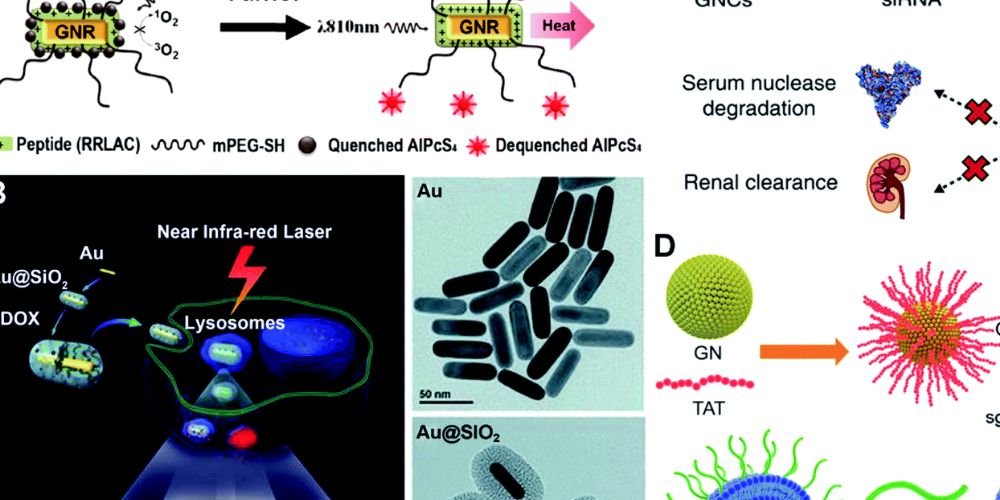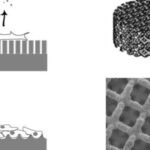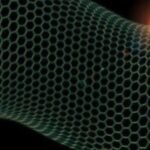In the realm of nanotechnology, the surface chemistry of nanoparticles plays a pivotal role in determining their properties and functionalities. This article explores the expansive domain of nanoparticle surface chemistry, unveiling its significance, tracking the evolution of key characteristics, examining diverse applications, and envisioning the transformative possibilities it holds for various industries.
The Significance of Nanoparticle Surface Chemistry
Nanoparticle surface chemistry is not merely a surface-level consideration but a fundamental aspect that influences nanoparticle behavior, stability, and interactions. Understanding and manipulating the surface chemistry of nanoparticles is crucial for tailoring their properties to meet specific application requirements, ranging from biomedical applications to catalysis and beyond.
Surface Functionalization and Biocompatibility
Surface functionalization is a key aspect of nanoparticle surface chemistry, involving modifying the nanoparticle surface with various molecules or coatings. This process enhances biocompatibility, allowing nanoparticles to interact with biological systems while minimizing adverse effects, making them suitable for drug delivery and medical imaging applications.
Stability and Colloidal Properties
Their surface chemistry directly influences the stability of nanoparticles in solution. Appropriate surface modifications can maintain colloidal stability, preventing agglomeration or precipitation and ensuring uniform distribution in various matrices, such as inks, paints, and pharmaceutical formulations.
Tuning Optical and Electronic Properties
Nanoparticle surface chemistry plays a crucial role in tuning nanoparticles’ optical and electronic properties. By modifying the surface, researchers can control parameters such as absorbance, fluorescence, and conductivity, enabling applications in sensors, displays, and electronic devices.
Evolution of Key Characteristics in Nanoparticle Surface Chemistry
The journey of nanoparticle surface chemistry is intricately woven with the evolution of key characteristics that have been instrumental in expanding the versatility of nanoparticles.
Ligand Exchange and Functional Groups
Ligand exchange is a common technique in nanoparticle surface chemistry involving the replacement of original surface ligands with desired functional groups. This process allows precise control over surface properties, influencing reactivity, solubility, and interactions with surrounding environments.
Polymeric Coatings and Stealth Properties
Polymeric coatings represent a sophisticated approach to nanoparticle surface chemistry, providing stealth properties that evade immune recognition. In drug delivery applications, polymeric coatings enhance blood circulation time, facilitating targeted delivery to specific tissues.
Inorganic Surface Modifications
Inorganic surface modifications involve adding inorganic materials, such as metals or metal oxides, to the nanoparticle surface. This approach enhances stability, catalytic activity, and magnetic properties, expanding the range of applications in fields like catalysis, imaging, and magnetic resonance imaging (MRI).
Diverse Applications of Nanoparticle Surface Chemistry
Nanoparticle surface chemistry enables many applications across various industries, reshaping how we approach challenges in medicine, catalysis, imaging, and environmental science.
Biomedical Applications
In medicine, it is harnessed for various biomedical applications. Surface-engineered nanoparticles serve as drug carriers, imaging, and therapeutic agents, allowing targeted and personalized treatments in areas such as cancer therapy, diagnostics, and regenerative medicine.
Catalysis and Nanoreactors
Nanoparticle surface chemistry is vital in catalysis, where the surface acts as a catalytic site. Engineered surfaces enhance catalytic activity, selectivity, and stability, making nanoparticles pivotal in environmental remediation, fuel cells, and industrial processes.
Imaging and Sensing
Surface-engineered nanoparticles are widely used in imaging and sensing applications. Functionalized surfaces enable specific interactions with target analytes, improving sensitivity and selectivity in techniques such as magnetic resonance imaging (MRI), fluorescence imaging, and biosensing.
Environmental Remediation
Nanoparticle surface chemistry contributes to environmental remediation efforts. Engineered surfaces enhance pollutants’ adsorption and catalytic degradation, offering sustainable solutions for water purification, air filtration, and soil remediation.
Transformative Possibilities and Future Outlook
The trajectory of nanoparticle surface chemistry points towards a future filled with continued innovation, integration, and unprecedented possibilities.
Multifunctional Surface Modifications
The integration of multifunctional surface modifications is poised to redefine the capabilities of nanoparticles. Combining different functional groups on a single nanoparticle surface allows for diverse applications within a single nanosystem, opening new possibilities in nanomedicine, sensing, and catalysis.
Responsive and Smart Nanoparticles
Nanoparticles with responsive and smart surfaces, capable of adapting to environmental stimuli, represent the future of nanoparticle surface chemistry. These dynamic surfaces enable controlled drug release, on-demand sensing, and responsive behavior in various applications.
Standardization and Regulatory Considerations
As the field of nanoparticle surface chemistry advances, the establishment of standards and regulatory considerations becomes imperative. Standardized protocols for surface characterization and safety assessments are crucial for ensuring surface-engineered nanoparticles’ responsible development and application.
Conclusion
Nanoparticle surface chemistry has evolved from a theoretical concept to a transformative force with far-reaching implications for various industries. As we navigate the nanoworld, the significance of nanoparticle surface chemistry is both promising and profound. With continued research, technological breakthroughs, and a commitment to responsible applications, it will remain a driving force in reshaping how we engineer nanomaterials, unlocking new possibilities, and redefining the future of nanotechnology.











